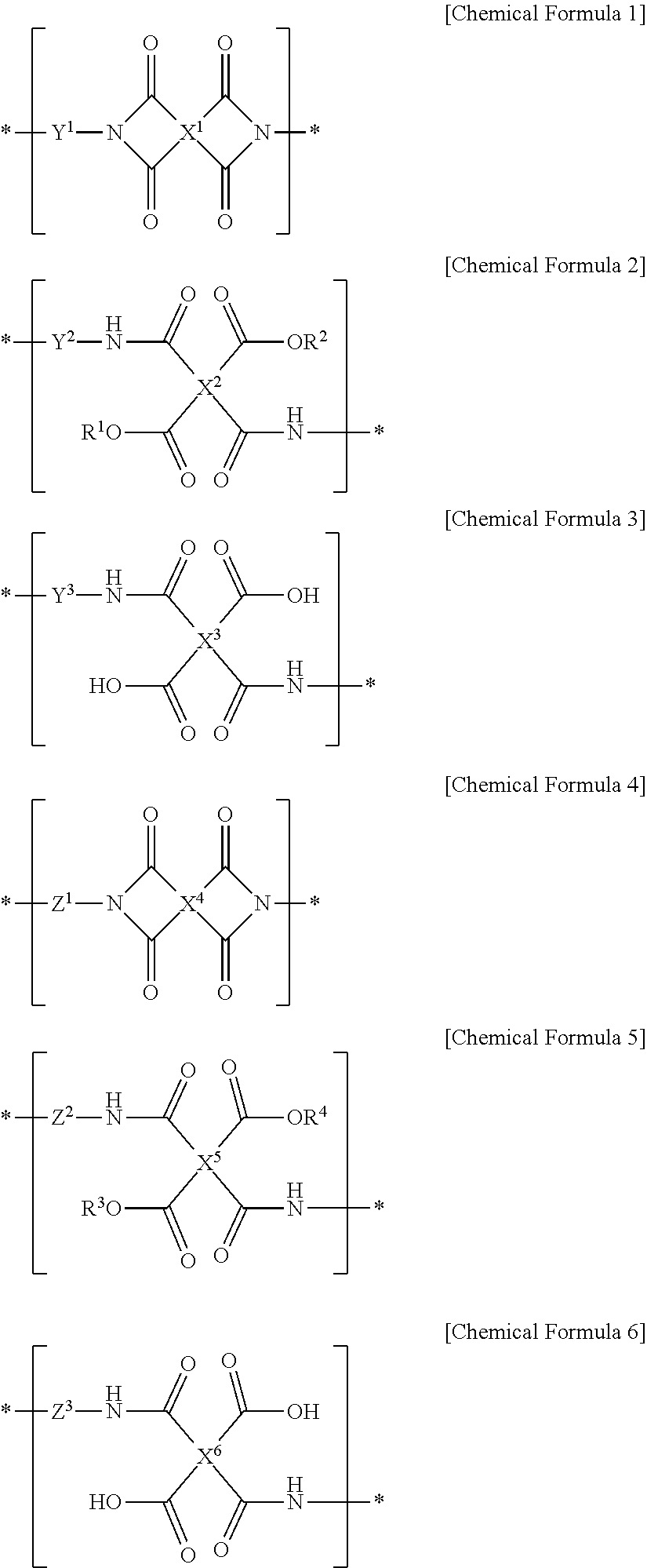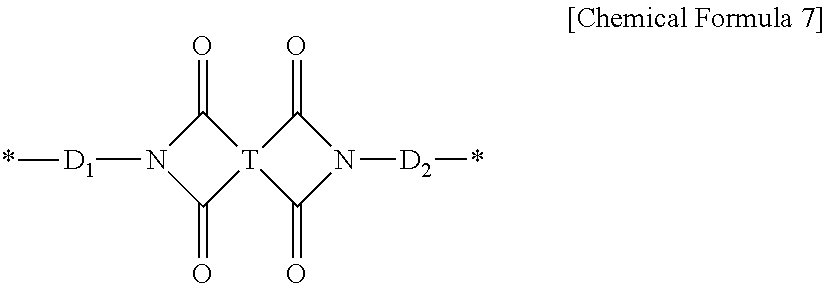Liquid crystal alignment composition, method of preparing liquid crystal alignment film, and liquid crystal alignment film, and liquid crystal display using the same
a technology of liquid crystal alignment and composition, which is applied in the direction of instruments, coatings, chemistry apparatus and processes, etc., can solve the problems of insufficient inability to achieve sufficient performance of a panel, and limitation of polyimide, etc., and achieves excellent film strength, improved alignment property and electrical properties, and high degree of imidization
- Summary
- Abstract
- Description
- Claims
- Application Information
AI Technical Summary
Benefits of technology
Problems solved by technology
Method used
Image
Examples
preparation example 1
e DA1-1
[0182]It was prepared as shown in the following Reaction Scheme.
[0183]Specifically, CBDA (cyclobutane-1,2,3,4-tetracarboxylic dianhydride, compound 1) and 4-nitroaniline were dissolved in DMF (Dimethylformamide) to prepare a mixture. Subsequently, the mixture was reacted at about 80° C. for about 12 hours to prepare amic acid of the compound 2. Thereafter, the amic acid was dissolved in DMF, and acetic anhydride and sodium acetate were added to prepare a mixture. Subsequently, the amic acid included in the mixture was imidized at about 90° C. for about 4 hours to obtain the compound 3. The obtained imide of the compound 3 was dissolved in DMAc (Dimethylacetamide), and then, Pd / C was added to prepare a mixture. It was reduced at about 45° C. under hydrogen pressure of about 6 bar for about 20 hours to prepare diamine DA1-1.
preparation example 2
e DA1-2
[0184]
[0185]DA1-2 having the above structure was prepared by the same method as Preparation Example 1, except that DMCBDA (1,3-dimethylcyclobutane-1,2,3,4-tetracarboxylic dianhydride) was used instead of CBDA (cyclobutane-1,2,3,4-tetracarboxylic dianhydride).
preparation example 3
DA1-3
[0186]It was prepared as shown in the following Reaction Scheme.
[0187]Specifically, 25 g of CBDA (cyclobutane-1,2,3,4-tetracarboxylic dianhydride, compound 1) was put in 250 mL of methanol, 1-2 drops of hydrochloric acid were added, and then, the mixture was heated under reflux at 75° C. for about 5 hours. After removing the solvent by pressure reduction, 300 mL of ethyl acetate and normal hexane were added to solidify. The produced solid was filtered under reduced pressure, and dried under reduced pressure at about 40° C., thus obtaining 32 g of the compound 4.
[0188]To 34 g of the obtained compound 4, 100 mL of toluene was added, and 35 g of oxalyl chloride was added at a room temperature. 2-3 drops of dimethylformamide (DMF) were added dropwise, and the mixture was stirred at about 50° C. for about 16 hours. After cooling to a room temperature, the solvent and the residual oxalyl chloride were removed by pressure reduction. To the yellow solid product, 300 mL of normal hexane...
PUM
| Property | Measurement | Unit |
|---|---|---|
| concentration | aaaaa | aaaaa |
| temperature | aaaaa | aaaaa |
| thickness | aaaaa | aaaaa |
Abstract
Description
Claims
Application Information
 Login to View More
Login to View More - R&D
- Intellectual Property
- Life Sciences
- Materials
- Tech Scout
- Unparalleled Data Quality
- Higher Quality Content
- 60% Fewer Hallucinations
Browse by: Latest US Patents, China's latest patents, Technical Efficacy Thesaurus, Application Domain, Technology Topic, Popular Technical Reports.
© 2025 PatSnap. All rights reserved.Legal|Privacy policy|Modern Slavery Act Transparency Statement|Sitemap|About US| Contact US: help@patsnap.com



